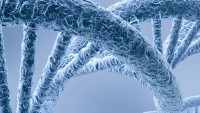‘Dark ages’ not Dark! Medieval scientists knew about the tiny size and sphericity of Earth, and proposed that it rotates. Learn about Ptolemy, Boëthius, Buridan, and Oresme. …read more Read more here: creation.com
In 1975, ICR’s founder and hydrological engineer Dr. Henry Morris made some interesting human population calculations. He demonstrated the feasibility of obtaining today’s world population in only about 6,000 years. A new study presents a very different version of human history—one in which the population grew very slowly for 200,000 years. Does the science in this new report debunk Dr. Morris’ 40-year-old biblical argument? More… …read more Read more here: icr.org
Increasingly, orphan genes defy evolution and support the Genesis account of creation. These genes are unique sets of coding sequences specific to particular creatures. This is a big problem for evolutionary ideas to explain. In a recent research report, scientists describe a new set of 1,307 orphan genes that are completely different between humans and chimpanzees. More… …read more Read more here: icr.org
Naturalistic objections to the design argument from autopoiesis fail by begging the question. …read more Read more here: creation.com
‘Autopoiesis’ (self-making) shows that all aspects of life lie beyond naturalistic explanations. …read more Read more here: creation.com
By Dr. Georgia Purdom The issues of cloning and stem cells raise many emotional and ethical concerns. How do we think biblically regarding these topics? …read more Read more here: AIG Daily
By Dr. Elizabeth Mitchell Scientists believe protein sequences from dinosaur blood vessel walls may help them map evolutionary relationships. …read more Read more here: AIG Daily
Many zoologists consider cuttlefish to be the most intelligent invertebrate species, which is quite a problem from an evolutionary perspective. Evolutionists view intelligence evolving through social interactions and long lifespans. But cuttlefish are cephalopods. They don’t have a complex social structure and live only about a year—the lifespan of a butterfly. How did cuttlefish become so bright? More… …read more Read more here: icr.org
The Moeraki Boulders of New Zealand tell a fascinating story. …read more Read more here: creation.com
Researchers at the University of Texas Southwestern Medical Center discovered a gene called NORAD that, unlike protein-coding genes, makes a long functional RNA that works directly in the cell’s nucleus. NORAD helps preserve the correct number of chromosomes in cells (e.g. 46 for humans). Conversely, the cellular chromosome number becomes unbalanced when the NORAD gene goes awry, a common trait in cancerous cells. Could the NORAD gene aid cancer research? More… …read more Read more here: icr.org
Incredible lens engineering in an ‘early’ creature. Trilobites, described by Stephen Jay Gould as ‘everyone’s favourite invertebrate fossil,’ are a class of marine arthropods which are often well preserved and of striking appearance.1,2 They are believed to be extinct. They are mostly between 10 and 50 mm long (3/8 to two inches) although a few species attained a length of 750 mm (2 1/2 feet). Trilobites are characterized by a ridged carapace, or shell, made of chitin, divided into three lobes which give the class its name. While most trilobites had eyes, a number had none. A common [More]
By Dr. Don DeYoung Can you imagine a plant that is nutritious, grows rapidly without special care, has medicinal value, and provides chemicals to purify water in remote places? …read more Read more here: AIG Daily
Every year scientists discover new and amazing animal designs, and 2015 was no exception. Each find brings a new reminder of the same message every generation needs to hear: “The heavens are Yours, the earth also is Yours; The world and all its fullness, You have founded them. The north and the south, You have created them.” More… …read more Read more here: icr.org
Did mankind come from Adam? Did nations arise from families dispersed from Babel, found in modern-day Iraq? According to the most popular versions of human evolution, mankind came from an ape-kind. Animals supposedly evolved without supernatural tinkering, and the world’s nations emerged from Africa. But discoveries from archaeology, linguistics, and genetics during 2015 confirm the Genesis account. More… …read more Read more here: icr.org
By Dr. Elizabeth Mitchell Some think acorn worms, virtually unchanged since the Cambrian explosion, represent an evolutionary link between invertebrates and humans. …read more Read more here: AIG Daily
By Frost Smith Creationist scientists Drs. Tomkins and Bergman came up with an overall DNA similarity between humans and chimps of around 81%—quite a difference! …read more Read more here: AIG Daily
‘Superbugs’ are seen by some as evidence of evolution in action but the truth is rather different. …read more Read more here: creation.com
By Dr. Danny Faulkner If you make New Year’s resolutions, why don’t you decide this year to get outside at night away from city lights more often to enjoy God’s beautiful creation? …read more Read more here: AIG Daily
Discovery of Water Deep Below Earth’s Surface May Confirm Biblical Accounts | Christian News Network
Scientists who have long been puzzled by the origins of Earth’s water are beginning to believe it originated deep inside of the planet—just like the Bible describes. Where did our planet’s water come from? This question remains a hotly-debated issue among geologists and astronomers, who concede that it is still largely a mystery. Evolutionists who believe the Earth was originally a hot molten sphere abounding with toxic gases have struggled to make sense of the abundance of water currently on our planet. ……. New scientific findings seem to support the Bible’s account. A report published recently in the journal “Nature” [More]
This new book examines a possibility for the identity of the Bethlehem star. …read more Read more here: creation.com
By Todd Charles Wood Re-analysis of O’Micks’ character sets show that the lack of baraminic distance correlations is likely the result of a small taxon sample. …read more Read more here: AIG Daily
Advocates of vertical evolution think their beliefs are as factual as the earth orbiting the sun. However in 2015, science again shows something quite different. A supposed 150-million-year-old fossilized crab larva, discovered in Germany this year, surprised secular scientists because it “possesses a very modern morphology, indistinguishable from many crab larvae living today.” More… …read more Read more here: icr.org
By Frost Smith What can we do to help corals survive and why should we want to? …read more Read more here: AIG Daily
Rather than ‘evolution in action’, claims of a new weed species show that the Designer created complexity that allows for speciation. …read more Read more here: creation.com
By Dr. Marcus Ross Winged reptiles were primitive, clumsy, “prehistoric” beasts, barely able to get off the ground, right? Take a closer look and see. …read more Read more here: AIG Daily
By Avery Foley Geologists claim their work with the fossil Dicynodon shows that the supposed terrestrial mass extinction happened before the marine extinction. …read more Read more here: AIG Daily
A team of French and Canadian scientists have identified preserved embryos within the eggs of a tiny shrimp-like creature believed to have lived over 500 million years ago, raising questions about both the development of the creatures’ brooding abilities and the likelihood of such delicate materials surviving for thousands of millennia. Waptia fieldensis is a tiny, shrimp-like arthropod whose fossilized remains were first found 100 years ago in Cambrian layers of fossils in Canada. Now extinct, Waptia was a frail creature that carried the eggs of its young within its own body. Canadian researchers studying Waptia specimens recently made a [More]







































